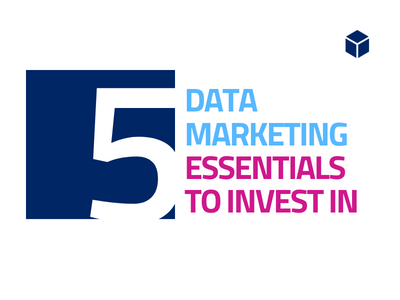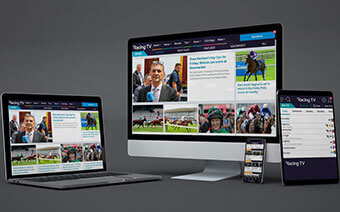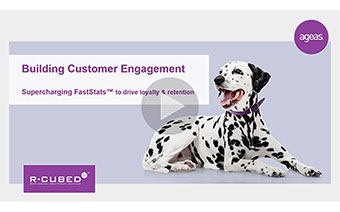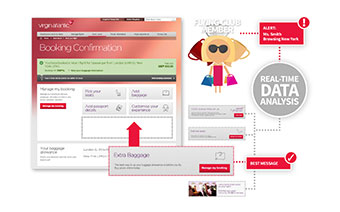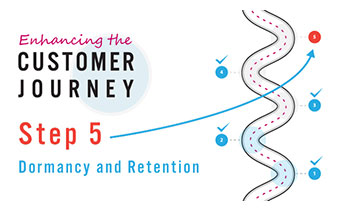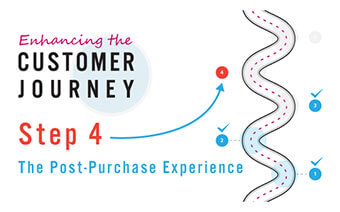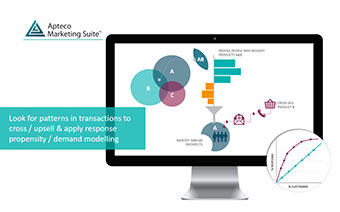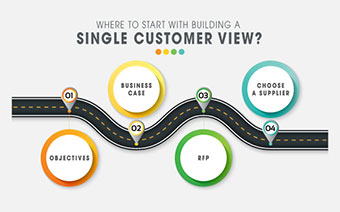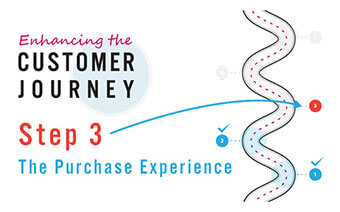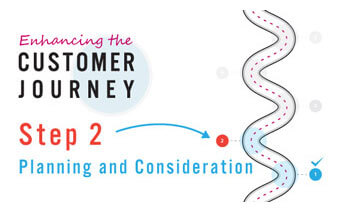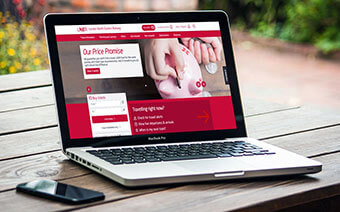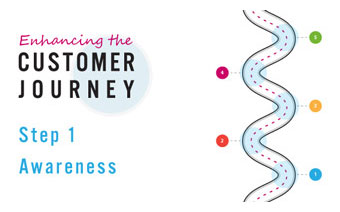Last month, we shared an article on how to go about building a Single Customer View written by Sarah Storey, a leading independent expert in SCVs and customer relationship management.
We’re pleased to bring you her second article, on how to run the pitch for your SCV. It’s a big undertaking that’s time-intensive and vitally important to get right.
So if you’re looking at building – or changing – your SCV, read on.
And if you want to read Sarah’s first article, you’ll find it here.
How to run the pitch
I recently posted some advice on how to go about building a Single Customer View. In this article, I talk about the pitch process itself and how to ensure you make the right choices.
Putting together your project team
Project teams need two things to succeed – a high level sponsor and representation from across the business.
If you don’t have senior level backing, your project team will crumble under the day to day demands of the business. You’ll be asking individuals to give up significant amounts of time and they’ll likely be under pressure to get back to their day jobs.
You also need to ensure that all areas of the business are represented, to ensure impacts on all areas are assessed, although ideally you will keep the project team to no more than 10.
Make sure that the same people attend each session. Consistency is key in establishing the criteria and reviewing and scoring pitch proposals. So don’t let a department send someone new along each time.
Build – and rebuild – your business case
You’ll already have built your business case if you’ve got this far, but it’s important to treat it as a working document.
As you go through the pitch process, the proposals from your suppliers will generate ideas that you haven’t thought of and you’ll want to add some of these into your business case, as part of a feedback loop.
However, you equally need to be aware of scope creep – and cost creep. You’ll pay for everything you ask for, so make sure you’re not adding things in unless you know what they’re worth to you.
Be clear on your budget
Your business case will – or should – have identified the budget you have available and it’s important that you share this with your suppliers – or at least a decent estimate.
SCVs come in all shapes and sizes, and if you’re going to get realistic proposals, suppliers will need to have a good idea of what you can afford. Being vague, to try and land a bargain or because you don’t know, will just frustrate everyone involved, so be upfront.
Selecting suppliers
You should invite 3 or 4 suppliers to pitch. You may already have some in mind, but I always suggest that you should invite a mix of large and small agencies. It’s also very likely that someone will make a recommendation for a supplier they’ve worked with before, so you’ll need to factor that in.
Pitches are time consuming and hard work. If you invite a dozen companies to pitch, the chances are good that you’ll be exhausted and fed up before you get halfway through. So if you want to review more options, draw up a longlist and ask for initial written responses. You can then use this process to reduce the pitch list to something more manageable.
Issue your supplier brief
Before you invite suppliers in for the pitch, you’ll need to send them the brief. This needs to be as detailed as possible. You’ll want to include –
- Your objectives
What are you trying to achieve? Be specific – do you want to deliver more personalised marketing, to understand customer behaviour, deliver faster communications, to standardise marketing permissions? All of the above?
- Your requirements
What are you asking the supplier to do? Build a SCV certainly, but do you also need them to carry out a data audit first? Host the data? Be able to transition in-house later? Deliver marketing campaigns? What about analysis and reporting? How many users will you need? If you have any absolute requirements – eg a certain campaign tool must be used – then state this up front.
- A data table
Identify the data sources and systems that needed to be considered – what they are, what they do, where they are held, volumes and update frequencies.
- Sample data
I’d strongly recommend that you include some sample customer data with the brief. Ask them to perform some basic work on it – eg provide some counts, produce a matching report and so on – but also give them free rein to show what they can do with the data. It’s their chance to impress you.
- How you want responses
Specify how you want to receive responses to your brief. Receiving proposals in varying formats, with different levels of detail, will make it very hard to compare responses. Outline the key areas that must be addresses – eg budget, timescales, SLAs – so that you have a level playing field and compare like-for-like responses accurately.
The initial supplier responses are a key way of assessing agencies at an early stage. Who is contacting you for further information? Who haven’t you heard from? A good supplier will be asking further questions and trying to over deliver on the brief – but not asking you to clarify something if it’s already been made clear in the brief.
If you’ve chosen to send the brief to more suppliers than you intend to have pitch, this is the stage to start reducing the numbers.
Create a scoring matrix
When you come to the pitches themselves, you need to have a consistent way of evaluating and scoring each supplier. This helps to reduce personal preferences and knee-jerk responses.
There are two things you need to do – agree the criteria you’ll score each supplier on and determine the weighting that you’ll give to each. You’ll want to break down the criteria into much more detail, but at a simple level, this may look something like this –
- User interface – 5%
- Analysis capability – 20%
- Cost – 30%
- Data, SCV design and build experience – 25%
- Account management team – 20%
You’ll then score each supplier against each area – for example, on a 1-10 scale.
A word of warning on weighting the criteria. Procurement will want to give Cost a very high weighting – perhaps 50% or more. If you allow this to happen, you’re going to end up with the cheapest provider, regardless of suitability. So be prepared to fight your corner!
Pitch day
The pitches themselves can be hard work, so here’s a few tips on making them run smoothly.
- Allow enough time – at least a couple of hours for each supplier.
- Run no more than 3 in a single day. Fatigue will quickly set in.
- Find a neutral venue. If possible, use an external meeting room. You don’t want to be swayed by fancy offices and premium coffee if you go to the suppliers.
- Control the group – don’t let it be derailed and going off on tangents on a single area. Plan the time and make sure you cover all areas. Beware of strong characters who can dominate the sessions.
- Technology – make sure that everything works before each session starts. Don’t waste the first half hour trying to find out how the projector works, or looking for the Wi-Fi code.
- Review each supplier as soon as you can – the longer you leave it, the more you’ll forget.
- Challenge any outliers in the scoring. Beware of mid-range scores, that may indicate someone didn’t understand the criterion and simply went for the safe option. Equally those who score at either end of the spectrum may be giving unrealistic gradings or have certain prejudices. In either case, make sure you drill down into the reasons and rescore if necessary.
- Don’t forget the people – avoid making personal judgements, but chemistry is important, so make sure you meet the account management team you’ll be working with.
- Hold a second round if necessary. If two or more suppliers score similarly, don’t be afraid to call them both back in, to probe further.
Finally, negotiate the contract
It can easily take 2-3 months to finalise the contract. You’ll want to review how the software licences work, tie in periods, exit clauses, SLAs, and support levels.
Be as specific as possible. What happens if you have a system problem at 8pm on a Friday night? Do you need it fixed immediately – or can it wait until Monday? Does the contract give clear timescales?
Remember – getting a SCV can revolutionise your marketing, but it’s not a simple task. You need to be prepared to put in the effort to get the right result – and most importantly, the right supplier.
If you’re planning a SCV project and need some support, just get in touch.
Thanks again to Sarah for allowing us to reproduce her articles here.
Sarah’s helped dozens of companies assess their needs when building a Single Customer View. If you need some support for your next project, get in touch with her on Linkedin.
In the meantime, if you’re looking to pitch for a Single Customer View – or anything else – we’ve put together a handy supplier brief which you may find useful. It’ll help you include all the information you need, Download a copy below.





